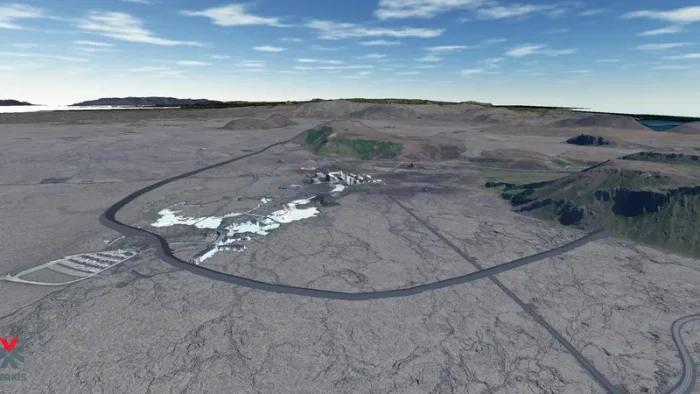The civil defence authorities of Iceland have devised a proactive plan to protect the Svartsengi area from the danger of advancing lava flow. The Civil Defense Infrastructure Group has completed its proposals for extensive barriers four kilometres long and six to eight meters high.
The team, comprising representatives from the engineering firm Verkís, the University of Iceland, the Icelandic Meteorological Office, and the engineering consultancy EFLA, was established in March 2021. Their mandate was to analyze critical infrastructure and suggest protective measures in response to potential lava flow scenarios linked to eruption sites and durations. This group has now submitted its findings as of May.
Víðir Reynisson, the Civil Protection Department head, explained that the barriers, as depicted in the designs, would measure up to four kilometres long and six to eight meters tall. Speaking on “Speglinum,” a Monday interview show on RUV, he stated that the decision to construct these substantial barriers rests with the government authorities.
The Civil Protection Agency intends to recommend the construction of these defensive barriers to the government. During a public information meeting regarding seismic activities on the Reykjanes Peninsula, Víðir Reynisson elaborated on these plans.
The Civil Protection Agency has clarified that one of the scenarios assessed by the group involved the construction of barriers to protect Svartsengi from lava flow. However, there was no immediate need to rerun lava flow simulations after the eruption at Little Hrút, which began on July 10, 2023. This decision was based on the fact that the scenarios currently in consideration had already been modelled.
As Iceland continues to harness the power of its volcanic landscape for geothermal energy, the planning and implementation of such barriers represent a significant step in disaster risk reduction. The proposal underscores Iceland’s commitment to balancing its sustainable energy initiatives with robust civil safety measures.

